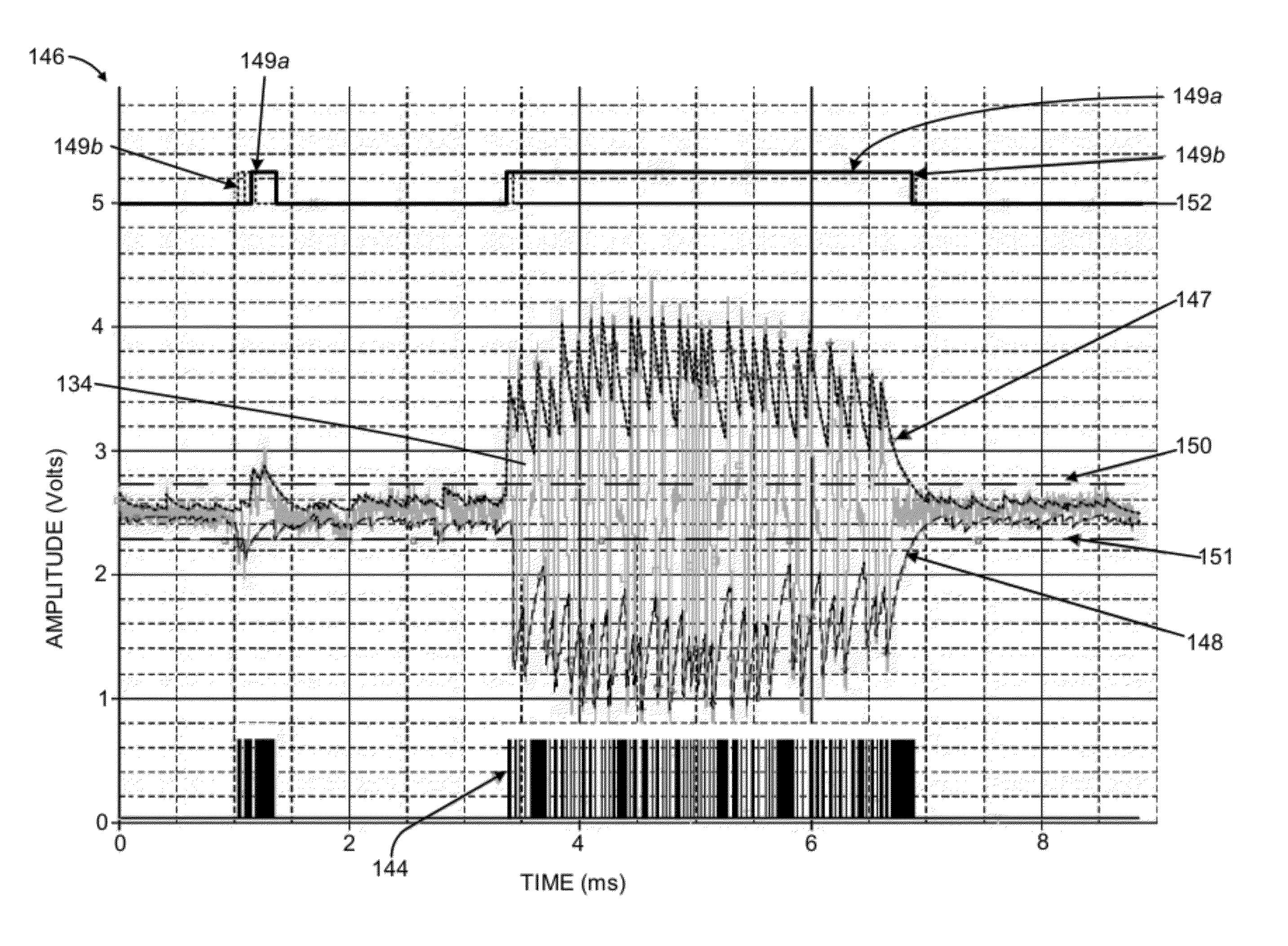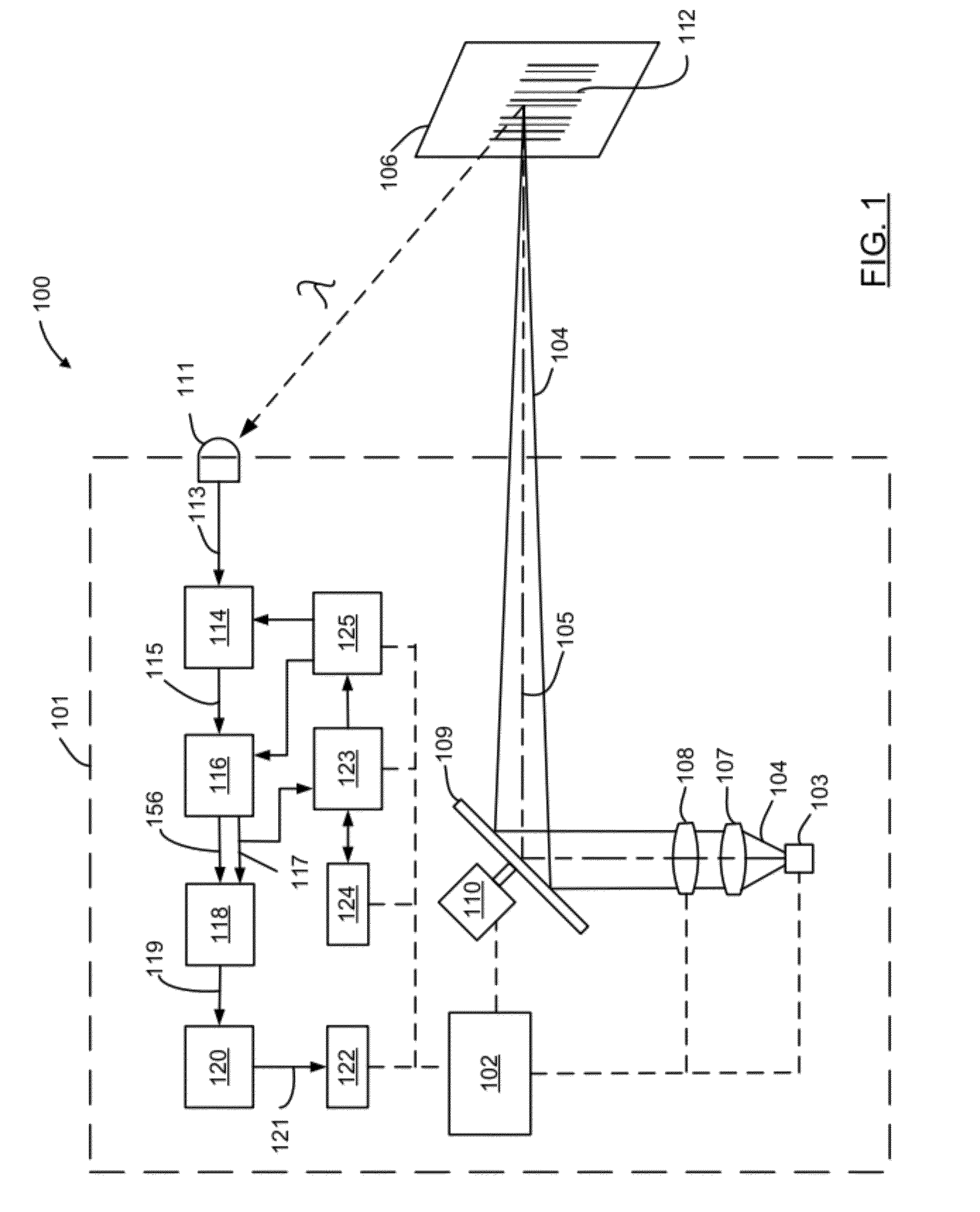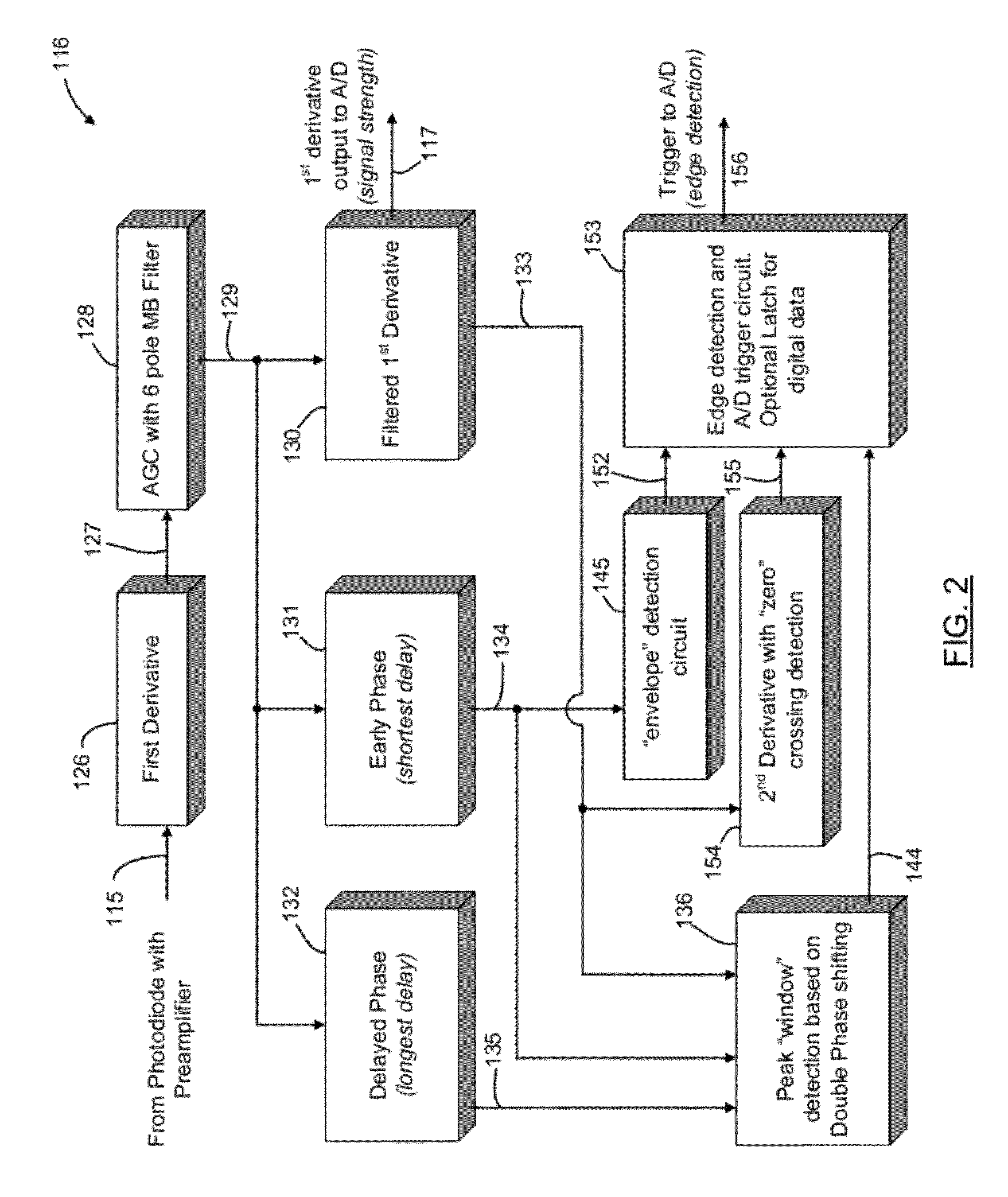Barcode reader with edge detection enhancement
a barcode reader and edge detection technology, applied in the field of processing analog scan data signals, can solve the problems of difficult to determine the exact, difficult and inability to produce analog scan data signals with precisely defined signal level transitions
- Summary
- Abstract
- Description
- Claims
- Application Information
AI Technical Summary
Benefits of technology
Problems solved by technology
Method used
Image
Examples
Embodiment Construction
[0017]The present invention provides an apparatus and method for decoding optical indicia, such as barcodes, that more effectively distinguishes between actual barcode elements and signal noise. As will be explained in greater detail below, an optical reader or imager that is used to “read” an indicium will not always obtain a sharp representation of the barcode symbol due to optical, environmental, and physical factors. Common causes for a distorted signal include the barcode being at a position beyond the far depth of field limit (e.g., out of focus), the barcode may be poorly illuminated so the contrast between black and white is not distinct, or the signal includes paper or substrate noise. Substrate noise is present because the barcode substrate is usually paper, and the laser light is scattered off the fibers having a random spatial structure. Additionally, aperture is an important controlling factor in laser beam shaping. However, aperture truncation resulting from beam shapi...
PUM
 Login to View More
Login to View More Abstract
Description
Claims
Application Information
 Login to View More
Login to View More - R&D
- Intellectual Property
- Life Sciences
- Materials
- Tech Scout
- Unparalleled Data Quality
- Higher Quality Content
- 60% Fewer Hallucinations
Browse by: Latest US Patents, China's latest patents, Technical Efficacy Thesaurus, Application Domain, Technology Topic, Popular Technical Reports.
© 2025 PatSnap. All rights reserved.Legal|Privacy policy|Modern Slavery Act Transparency Statement|Sitemap|About US| Contact US: help@patsnap.com



